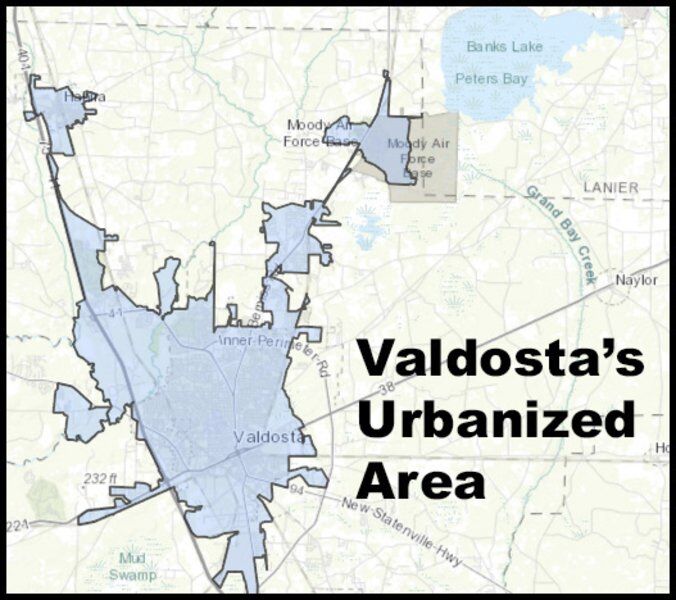Valdosta could lose metro status
Published 6:00 pm Wednesday, March 10, 2021

- Map courtesy Southern Georgia Regional Commission
VALDOSTA — Proposed changes in federal policy may strip Valdosta of its status as a metropolitan city but local officials say this doesn’t spell doom.
Valdosta and the surrounding area was officially declared a Metropolitan Statistical Area in 2005, based largely on numbers culled from the 2000 census. City leaders at the time touted the designation as the key to obtaining federal funds and programs available only to metro cities. The Valdosta MSA includes the counties of Brooks, Lowndes, Lanier and Echols.
A key number in the decision was that the population of Valdosta’s urbanized area had to exceed 50,000 people.
A new proposal issued by the federal Office of Management and Budget and published in the Federal Register in January calls for boosting the baseline population for a metro city’s urbanized area to 100,000. The document mentions Valdosta as being one of 144 cities now designated as metro that would fall short under the new proposal.
The population standard for a Metropolitan Statistical Area was issued in 1950 and hasn’t been changed since, even though the United States’ population has more than doubled, said Corey Hull, transportation and environmental director for the Southern Georgia Regional Commission. Hull has been keeping track of the metro situation for Valdosta, and said he first became aware of the OMB proposal in February.
“The OMB’s argument is that the MSA population baseline needs to be raised due to the general population increase,” he said. “That appears to be the only reason given in the notice for this.”
Valdosta’s urbanized area isn’t expected to exceed 100,000 even after the 2020 census, Hull said. The area includes most of the City of Valdosta, a stretch of land along the Bemiss Road corridor toward Moody Air Force Base, Hahira, and another westerly stretch of land along Ga. 133.
Possible loss of metro status is not something to worry over, Valdosta Mayor James Scott Matheson said.
“i don’t know who it would be detrimental to,” he said. Very few governmental organizations look at metro status anymore when rendering decisions, he said.
While there are government groups that look at the 50,000-person baseline, they don’t make decisions based on metro status, Hull said. These include the Valdosta-Lowndes Metropolitan Planning Organization for Transportation and the Community Development Block Grant, which deals with funds for housing rehabilitation.
Matheson said the block grant program would not be affected if Valdosta became non-metro.
Hull said some other cities listed as candidates for losing metro status are worried their hospitals would suffer from changes in Medicare reimbursement if the OMB’s proposal went through, and that South Georgia Medical Center was looking into the situation.
The loss of metro status is not certain. The OMB is taking public comment on the matter through Oct. 19, after which time it will decide where to go next, Hull said.
If the move goes through and proves a blow to the city, Valdosta will fight back, the mayor said.
He forwarded to The Times a copy of a letter written to the OMB by Rep. Bruce Westerman, R-Ark., and co-signed by Rep. Austin Scott, R-Ga., opposing the proposed change.
“Doubling the population threshold for an MSA merely because it sounds fair to the (Metropolitan and Micropolitan Statistical Area Standards Review Committee) is not an appropriate standard for changing U.S. Government policy,” the letter states. “While we appreciate the Committee’s work … we believe the proposed change to be arbitrary and capricious and urge the Office of Management and Budget to reject the proposal.”
The OMB’s proposal, and an opportunity to officially comment on it, are at the Federal Register website https://www.federalregister.gov/documents/2021/01/19/2021-00988/recommendations-from-the-metropolitan-and-micropolitan-statistical-area-standards-review-committee.
Terry Richards is senior reporter at The Valdosta Daily Times.




